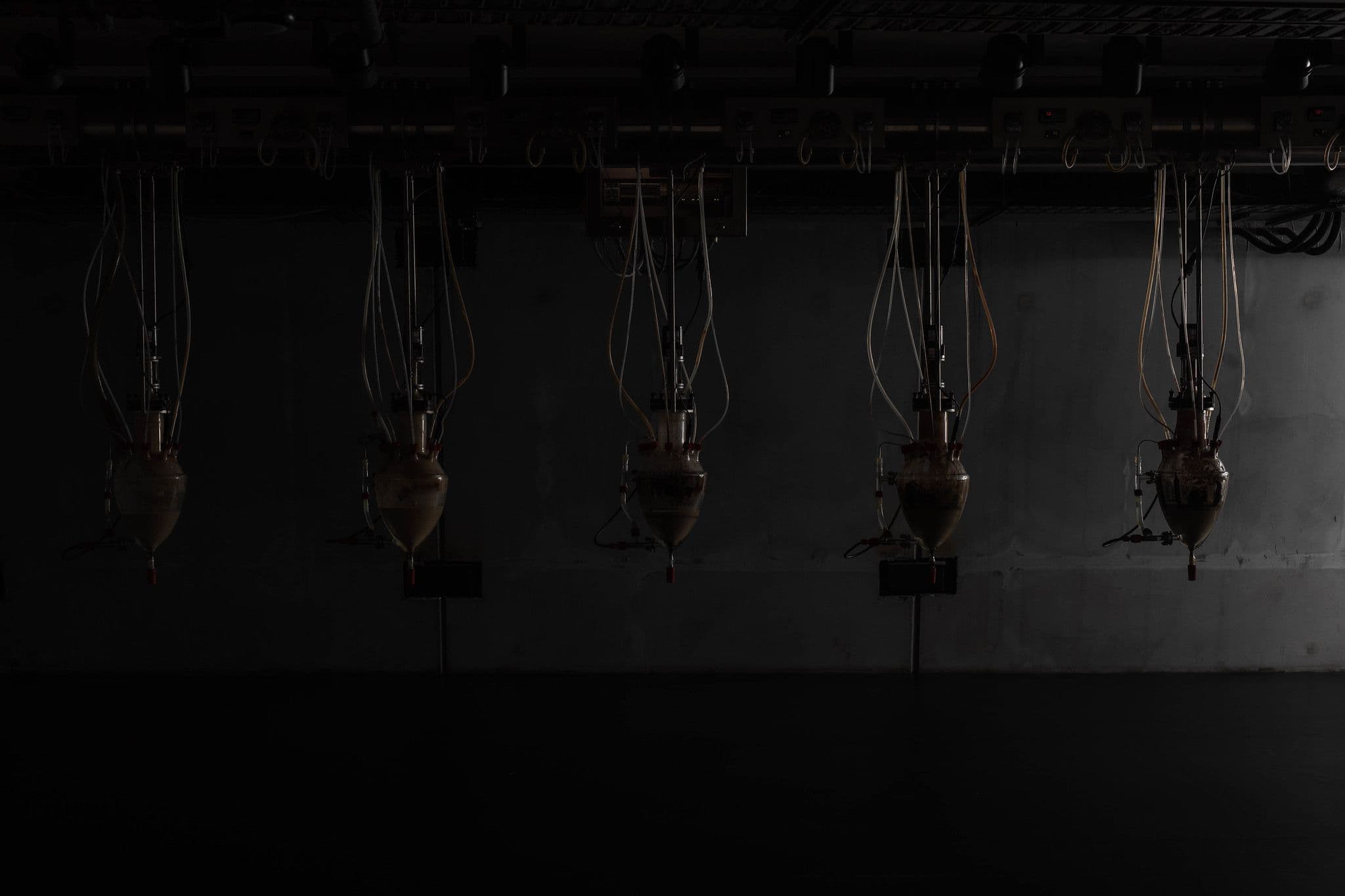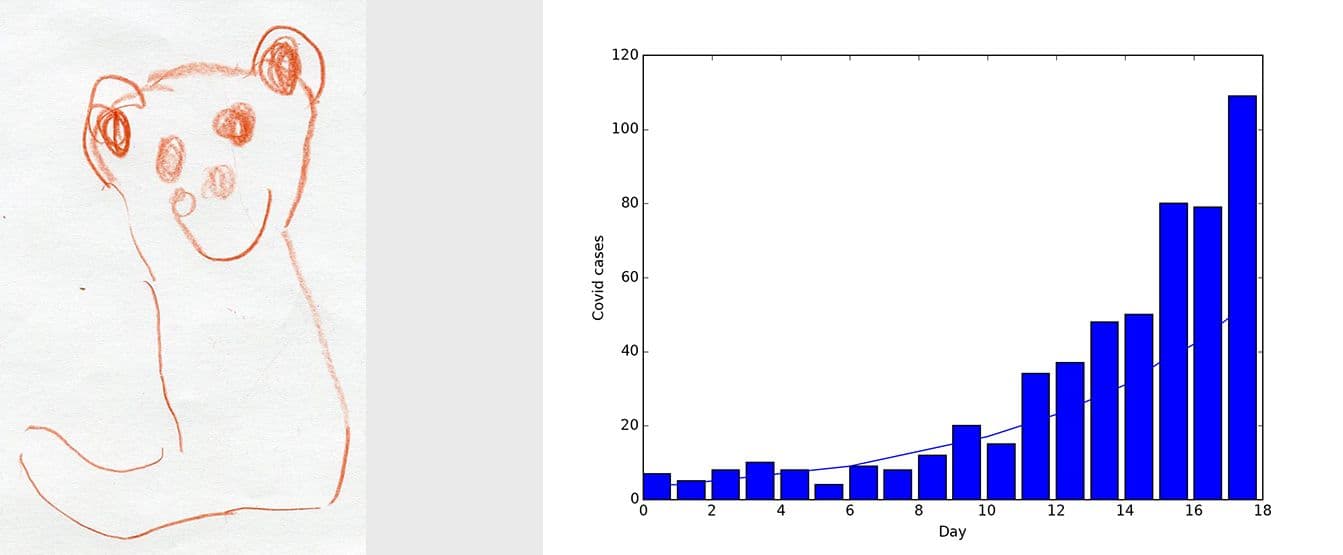COVID-19 diary

Day one
Sunday 22 March 2020, 9.10 am
I just tried to attend a managers’ meeting, a meeting scheduled to explain what we can and can’t (will or won’t?) do for Mona, a meeting which is scheduled for tomorrow. After five days of Mona being closed and me not going out, I’ve lost track of what day it is. I’m sure that filthy heathen COVID-19 won’t be taking Sunday off.
In writing the date, above, I noticed it is Kirsha’s and my sixth wedding anniversary. There won’t be much of a celebration but, if we get through this, I’m pretty sure I’ll remember this one more than the others. Easy, because I can’t really remember much of the others. We went to Quay Restaurant for one of them (the first?), and Kirsha got me a paper bow tie (since one of the traditional first anniversary gifts is paper). Last year she got me a wooden bow tie. The traditional sixth anniversary gifts are iron and sugar, so no tie there. She had forgotten it was our anniversary, anyway.
Our daughter, Sunday, is drawing pictures of a bear, but she is upset because she doesn’t like what she has drawn. I like it. And now she’s trying letters.

A couple of days ago, I plotted the distribution of COVID-19 cases in Australia. An exponential distribution would have been concerning—that would mean we’d soon be where Italy is now, with morgues the only businesses that are full—but it turned out worse than that. Our curve is slightly steeper than Italy’s and it recently got steeper. That may be because a great many high-risk Australians have been repatriated, but the augury isn’t great. And while Tasmania’s seventeen cases might seem promisingly low, it’s only a couple of days on the distribution behind the rest of Australia (population adjusted).
Today, my friends Anthony and Kayo and their kids will arrive to isolate in Tasmania. Yesterday, ArtPro’s Nic arrived, with Lucille and Aldo. Zeljko and Shelley (two of my original gambling partners) and their daughter, Emily, are in Hobart. If it weren’t for the end of civilisation and its attendant social isolation (from yesterday, everyone arriving is sentenced to two weeks of their own company—for me that would’ve been a cruel and unusual punishment, but these are cruel and unusual times), we probably would have been celebrating. And, of course, we wouldn’t have known it, but we would have been celebrating the absence of catastrophe. That means that most of the time, we have something to celebrate. Just not now.
The Prime Minister, the leader of a right-wing government that defeated Mona’s $50-million expansion by defeating Labor, just made an announcement, and it brought a tear to my eye (and a tear in the nation’s hip pocket). He doubled the dole. That’s more evidence that left and right are alike except for in-group boundaries (you’ll have to read my forthcoming book to understand that one). This disaster is ring fencing Australia, so the Prime Minister and his crew are now using the Australian border as their in-group boundary. I initially thought COVID-19 had turned Australia into a socialist country, but it has simply turned Australia into a family.
I just had a conversation with my mate Stefan, appropriately socially distant since he’s in the US. He’d messaged about ‘Lily pads and exponential thinking’. Here’s a problem: a lily pad grows in an otherwise empty pond. The lily pad produces a new pad every day, the same size as the original. They both reproduce the next day, so that on the first day there is one lily pad; the second day, two; the third day, four; and so on. The pond is completely covered with lily pads by the thirtieth day. On what day did lily pads cover half the pond?
If you don’t immediately realise it was the twenty-ninth day, you are not equipped to deal with the exponential growth of COVID-19. And how many days would it take lily pads to cover all the world’s oceans (from, say, a 100 metre-square pond, but it doesn’t matter much)? Another thirty-six.
Those that are arguing that President Trump (for example) is doing a bang-up job because only a tiny proportion of the public is infected should look at the way the number of infections increases. It doesn’t go 100, 200, 300, 400, 500. It goes 100, 120, 144, 173, 207. So far so good, right?
On the sixteenth day, the first (linear) series will reach 1600. The second (exponential) series will be 1541. Still good. Now let’s go another sixteen days. The first series is now 3200. The second series: 28,485. And another sixteen days? 4800 versus 526,645. And another sixteen? 6400 versus 6,761,701. If that latter number were people, and a disease spread at that rate, then starting with 100 people, there would be more than six million infected in sixty-four days. Well, it is a disease, and it’s called COVID-19, and that’s a bit slower than it’s growing in Australia (and there are already more than 100 victims). The 1.2 that it is multiplied by each day, that means that each person infected with COVID-19 is infecting about 2.4 other people (not 1.2 because the incubation period is more than one day). If we can get that 2.4 down to less than one (and thus the 1.2 down to less than one), the exponentially expanding sick population will fall, and it could decline as fast as it rose if the 1.2 becomes 0.83. That’s why the Chinese COVID-19 population plummeted when people stopped hanging around with each other.
But so far, that stuff isn’t working in Australia. People are still interacting, because people are social, and people don’t understand exponential growth.
Indulge some speculation. If the chance of catching COVID-19 from a carrier during a short contact is 0.05 (one in twenty), then the 2.4 infections that each such carrier causes means they are having forty-eight interactions while they are sick (on average). To get that to below 0.83, they need to reduce the number of interactions they have to sixteen or less. It’s really insidious because an uninfected individual is really unlikely to catch COVID-19 going about their normal day. In Tasmania, for example, there are seventeen people that are known to be infected. Because of the incubation period and untested positives, there are probably really around fifty carriers (presuming the seventeen have been removed from the population). I can guess from the 2.4 infections per carrier that over an eight- or nine-day period infected people interact with an average of forty-eight people (or more times with less people). Presumably uninfected people interact with more people (because they’re less sick), so say sixty-four people (twenty-five per cent more). If there are only fifty people who can infect you (today, but exponential growth means that number will skyrocket), then your chance of being infected over the next week and a bit is (50/500000*64) = 0.0064, or less than one per cent. So why does the exponential growth occur?
Here’s another (apparently unrelated) problem. How many people are required before there is a fifty per cent chance of two of them having the same birthday? It’s not 183 (half of 365). It’s actually twenty-three. 183 is the answer if the question was how many do you need before someone is fifty per cent likely to share your birthday? But all of those present can share a birthday with the others, so each one of the twenty-three can share a birthday with the other twenty-two, and each one of those with the remaining twenty-one, and so on. Clearly, you need 366 people to guarantee that two people have the same birthday (in a non-leap year), but with seventy people the chance of two sharing the same birthday is 99.9 per cent.
Your chance of being infected when you wander the streets might be small (over the incubation period) because there aren’t many COVID-19 positive people. But with lots of people wandering the streets, all potentially interacting with everyone else, interactions happen with COVID-19 positive people, and the 0.05s add up quickly. It’s just like birthdays: more interactions means unlikely outcomes become likely, and then almost certain. That’s called a combinatorial explosion, and COVID-19 uses it to blow us all up.
So fucking stay at home, and if you must go out, don’t touch anyone or anything, and wash your hands.
I might write more diary entries. Or I may not. It depends.